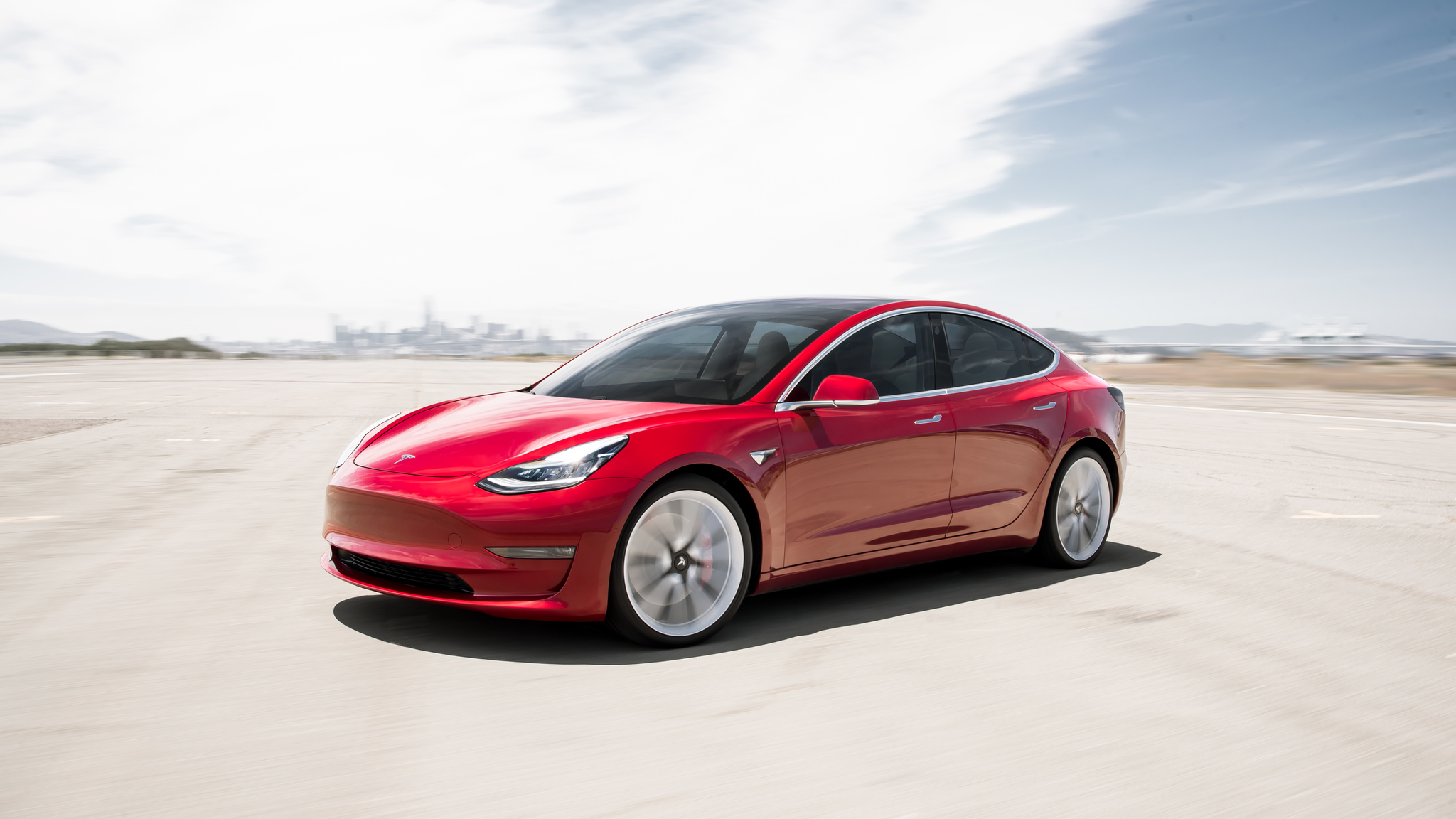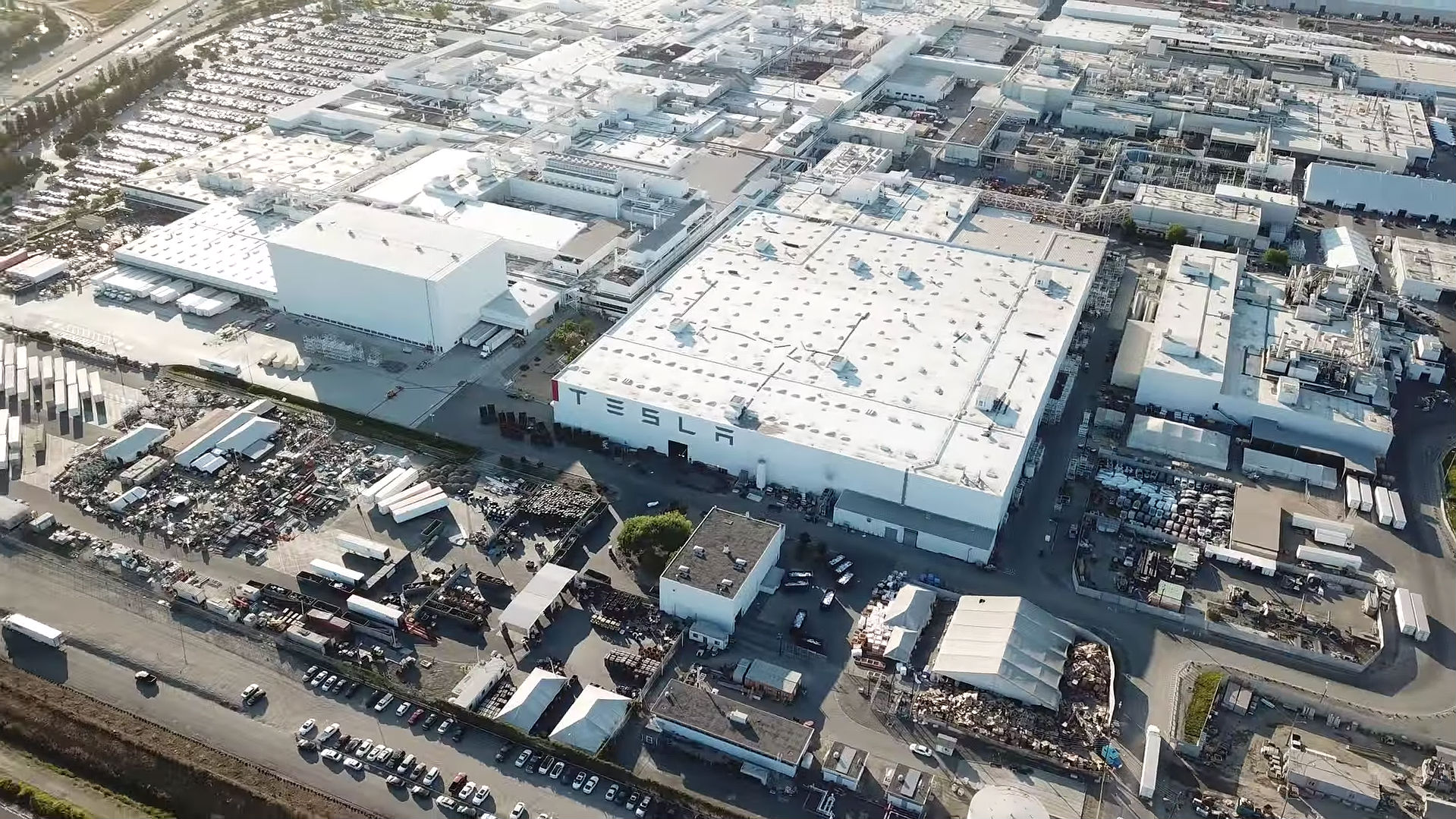
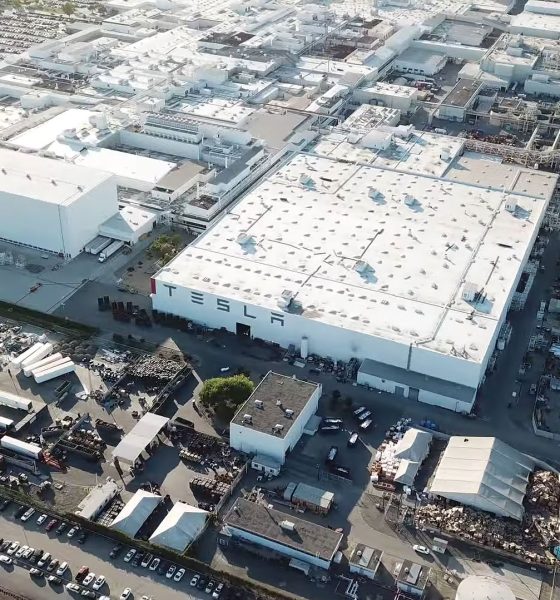
Investor's Corner
Tesla’s mission is bearing fruit despite escalating attacks from critics
Elon Musk dubs Tesla as a company aiming to accelerate the world’s transition to sustainable transportation and energy. Since the company started with the original Roadster, Tesla has courted as many dedicated critics as it does supporters. A “Tesla Death Watch” was even published by an online publication back in 2008 as the traditional auto industry waited on what appeared to be the inevitable fall of Tesla.
As history would show, such as thing never came to pass. The Model S was released, followed by the Model X, and now, the Model 3. While the rollout of each of these vehicles was all but problem-free, the electric cars eventually made it to market, and once they did, they were received very well by Tesla’s consumer base. Tesla has grown significantly since the days of the original Roadster and the first-generation Model S, with the company recently manufacturing 5,000 Model 3 in a week during the end of Q2 2018.
In an interview with Bloomberg Businessweek, Tesla CEO Elon Musk stated that the Model 3 ramp was a “bet-the-company” situation, where the failure of the car would have resulted in the electric car company’s crash. During the same interview, Musk also noted that he believes the Model 3 ramp, which has left him with permanent mental scar tissue, is close to leaving production hell. With signs that the company is now attempting to sustain its capability to manufacture 6,000 Model 3 per week, such as more than 19,000 new VIN registrations during the first two weeks of July, Musk’s statements appear to be accurate.
Despite these, Tesla has been met with continued criticism at every turn. A look at the company’s stock performance in July is indicative of just how divisive the company continues to be. Elon Musk has spent the last few months calling out what he believes is a bias in mainstream media about negative coverage on Tesla’s electric cars. This culminated in a period last May when the CEO openly clashed with journalists on Twitter after Musk suggested that he would start a website evaluating the credibility of news reporters, similar to how Yelp works with businesses. The aftermath of these clashes is still felt today, as proven by a New York Post article published last July 21 dubbing Musk as a complete “fraud.”
In social media, Tesla remains as divisive. Twitter alone is a platform where Tesla’s bulls and bears collide pretty much on an everyday basis. Since the departure of noted Tesla short-seller Montana Skeptic after Elon Musk allegedly called his boss to complain, efforts to undermine the company’s progress have escalated. Today, there is a group keeping the Burbank Airport, a lot used by Tesla to store its vehicles before delivering them to customers across the United States, under 24/7 surveillance. Latrilife, the person conducting the surveillance, claimed on Twitter that he has 350 employees and he deploys 2-person teams to document activity inside the airport lot. Critics of the company are under the impression that lots filled with Model 3 — the Burbank Airport being one of them — were proof that demand for the vehicle was decreasing and that customers are refusing delivery. The misinformation surrounding Tesla in social media has been so prevalent recently that even Vertical Research Group analyst Gordon L. Johnson ended up publishing an inaccurate note to clients about Tesla.
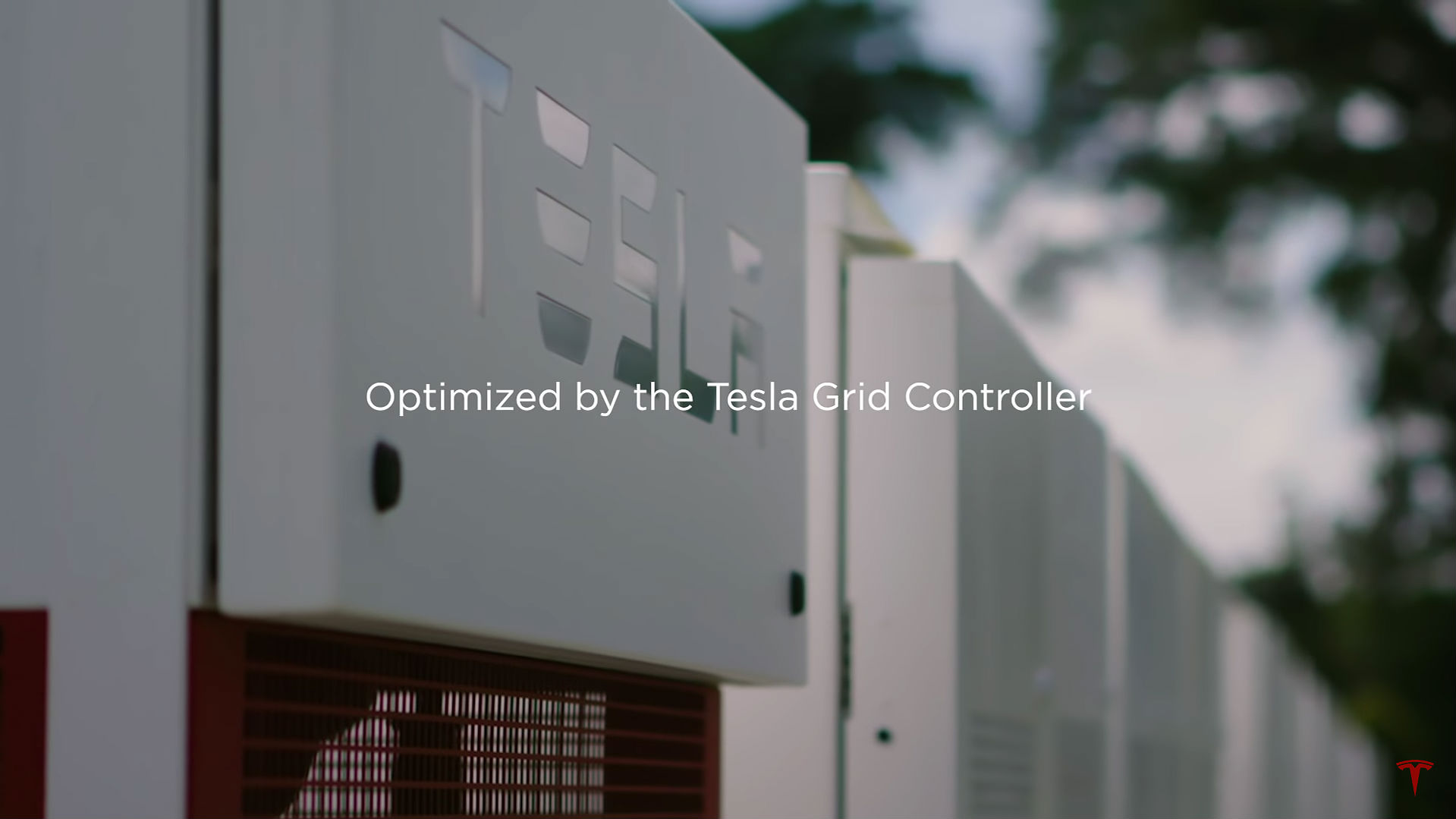
Amidst all this noise and the sensational headlines that Elon Musk triggers on Twitter, Tesla as a company has been quietly making progress in its goal to push the world closer to sustainability. Tesla Energy, a branch of the company that rarely makes the news, was lauded recently by Samoa for helping the island state reach its eventual goal of being powered 100% by renewable energy. During the 2018 Annual Shareholder Meeting, Elon Musk mentioned that another 1 GWh energy project would be announced in the near future. CTO JB Straubel also reaffirmed Tesla’s stance on the residential solar market, stating that the company is in no way stepping back from the residential energy industry.
Tesla’s vehicles are also starting to change the very perception of what cars can do. Jared Ewy, whose video of his family reacting to a surprise Model 3 became near-viral and attracted a Like from Elon Musk, noted in a blog post that he is in no way a “car guy.” Ewy wrote, however, that once he experienced a Tesla Model S, he knew that it was something different. That was why when the Model 3 became available; he opted to order the vehicle immediately. Professional auto journalists are giving Tesla’s vehicles their due as well, with the Model 3 Performance getting rave reviews from seasoned professionals. Among these is the Wall Street Journal‘s Dan Neil, who wrote a glowing review of the high-performance electric car (Neil eventually shut down his Twitter account amidst badgering from short-sellers and Tesla critics).
Even abroad, Tesla’s brand is becoming synonymous with forward-thinking companies that care about the future. In China, Tesla recently released its “Eagle Plan,” a role-playing program designed for children aged 5-12 that would enable kids to be familiar with the company’s products and sustainable energy solutions as a whole. According to information shared by Tesla owner @vincent13031925 on Twitter, the children’s program aims to educate and foster understanding of the company’s corporate mission, as well as its environmental protection significance. In South Australia, a plan is now underway to provide free solar panels and Powerwall 2 batteries to 50,000 low-income housing units as part of a virtual power plant, which could lower electricity bills in the region while providing backup power to the grid.

Investor's Corner
Tesla analyst realizes one big thing about the stock: deliveries are losing importance
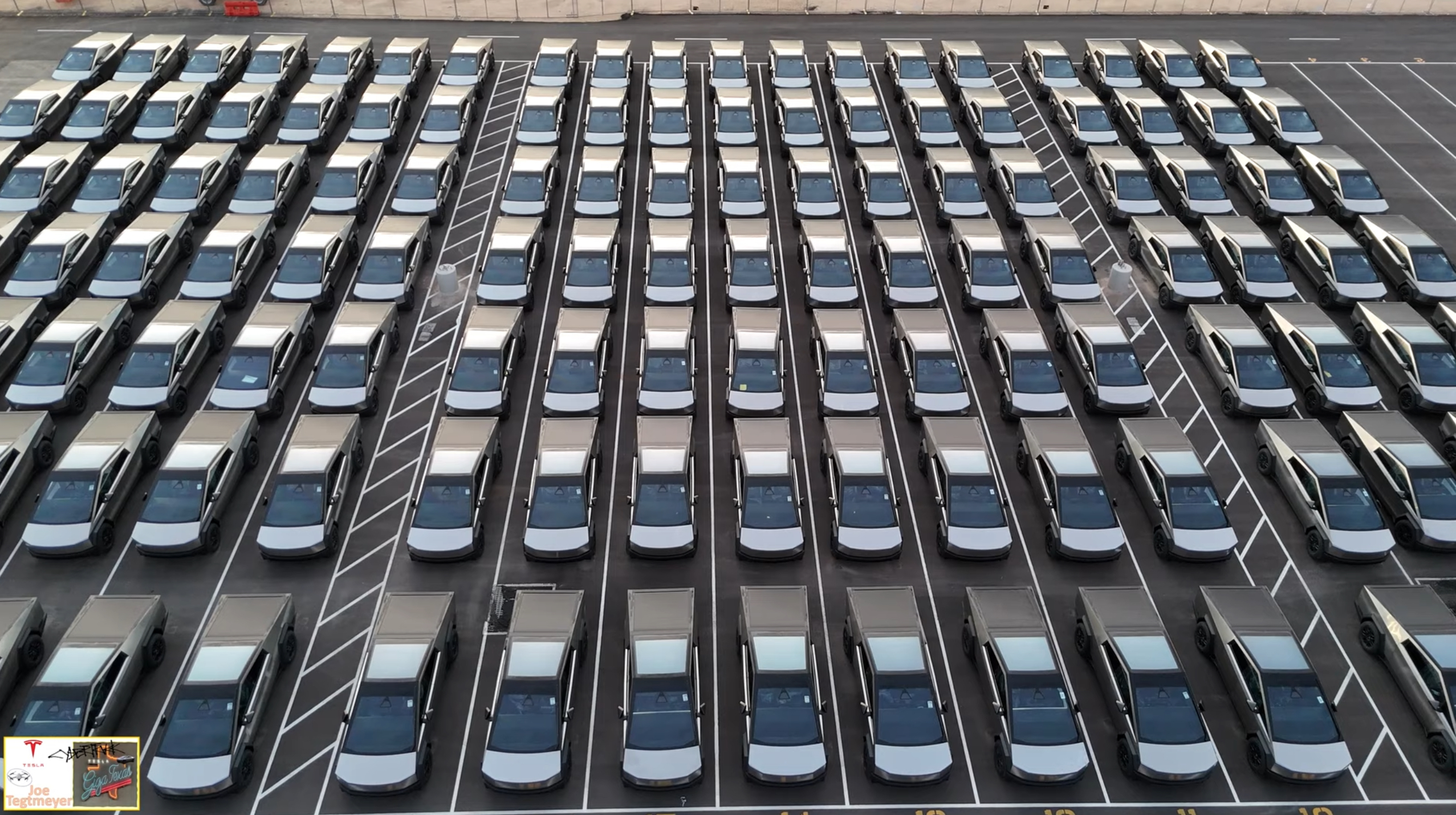
Tesla analyst Dan Levy of Barclays realized one big thing about the stock moving into 2026: vehicle deliveries are losing importance.
As a new era of Tesla seems to be on the horizon, the concern about vehicle deliveries and annual growth seems to be fading, at least according to many investors.
Even CEO Elon Musk has implied at times that the automotive side, as a whole, will only make up a small percentage of Tesla’s total valuation, as Optimus and AI begin to shine with importance.
He said in April:
“The future of the company is fundamentally based on large-scale autonomous cars and large-scale and large volume, vast numbers of autonomous humanoid robots.”
Almost all of Tesla’s value long-term will be from AI & robots, both vehicle & humanoid
— Elon Musk (@elonmusk) September 11, 2023
Levy wrote in a note to investors that Tesla’s Q4 delivery figures “likely won’t matter for the stock.” Barclays said in the note that it expects deliveries to be “soft” for the quarter.
In years past, Tesla analysts, investors, and fans were focused on automotive growth.
Cars were truly the biggest thing the stock had to offer: Tesla was a growing automotive company with a lot of prowess in AI and software, but deliveries held the most impact, along with vehicle pricing. These types of things had huge impacts on the stock years ago.
In fact, several large swings occurred because of Tesla either beating or missing delivery estimates:
- January 3, 2022: +13.53%, record deliveries at the time
- January 3, 2023: -12.24%, missed deliveries
- July 2, 2024: +10.20%, beat delivery expectations
- October 3, 2022: -8.61%, sharp miss due to Shanghai factory shutdown
- July 2, 2020: +7.95%, topped low COVID-era expectations with sizeable beat on deliveries
It has become more apparent over the past few quarters that delivery estimates have significantly less focus from investors, who are instead looking for progress in AI, Optimus, Cybercab, and other projects.
These things are the future of the company, and although Tesla will always sell cars, the stock is more impacted by the software the vehicle is running, and not necessarily the vehicle itself.
Investor's Corner
SpaceX IPO is coming, CEO Elon Musk confirms
However, it appears Musk is ready for SpaceX to go public, as Ars Technica Senior Space Editor Eric Berger wrote an op-ed that indicated he thought SpaceX would go public soon. Musk replied, basically confirming it.

Elon Musk confirmed through a post on X that a SpaceX initial public offering (IPO) is on the way after hinting at it several times earlier this year.
It also comes one day after Bloomberg reported that SpaceX was aiming for a valuation of $1.5 trillion, adding that it wanted to raise $30 billion.
Musk has been transparent for most of the year that he wanted to try to figure out a way to get Tesla shareholders to invest in SpaceX, giving them access to the stock.
He has also recognized the issues of having a public stock, like litigation exposure, quarterly reporting pressures, and other inconveniences.
However, it appears Musk is ready for SpaceX to go public, as Ars Technica Senior Space Editor Eric Berger wrote an op-ed that indicated he thought SpaceX would go public soon.
Musk replied, basically confirming it:
As usual, Eric is accurate
— Elon Musk (@elonmusk) December 10, 2025
Berger believes the IPO would help support the need for $30 billion or more in capital needed to fund AI integration projects, such as space-based data centers and lunar satellite factories. Musk confirmed recently that SpaceX “will be doing” data centers in orbit.
AI appears to be a “key part” of SpaceX getting to Musk, Berger also wrote. When writing about whether or not Optimus is a viable project and product for the company, he says that none of that matters. Musk thinks it is, and that’s all that matters.
It seems like Musk has certainly mulled something this big for a very long time, and the idea of taking SpaceX public is not just likely; it is necessary for the company to get to Mars.
The details of when SpaceX will finally hit that public status are not known. Many of the reports that came out over the past few days indicate it would happen in 2026, so sooner rather than later.
But there are a lot of things on Musk’s plate early next year, especially with Cybercab production, the potential launch of Unsupervised Full Self-Driving, and the Roadster unveiling, all planned for Q1.
Investor's Corner
Tesla Full Self-Driving statistic impresses Wall Street firm: ‘Very close to unsupervised’
The data shows there was a significant jump in miles traveled between interventions as Tesla transitioned drivers to v14.1 back in October. The FSD Community Tracker saw a jump from 441 miles to over 9,200 miles, the most significant improvement in four years.

Tesla Full Self-Driving performance and statistics continue to impress everyone, from retail investors to Wall Street firms. However, one analyst believes Tesla’s driving suite is “very close” to achieving unsupervised self-driving.
On Tuesday, Piper Sandler analyst Alexander Potter said that Tesla’s recent launch of Full Self-Driving version 14 increased the number of miles traveled between interventions by a drastic margin, based on data compiled by a Full Self-Driving Community Tracker.
🚨 Piper Sandler reiterated its Overweight rating and $500 PT on Tesla $TSLA stock
Analyst Alexander Potter said FSD is near full autonomy and latest versions showed the largest improvement in disengagements, from 440 miles to 9,200 miles between critical interventions pic.twitter.com/u4WCLfZcA9
— TESLARATI (@Teslarati) December 9, 2025
The data shows there was a significant jump in miles traveled between interventions as Tesla transitioned drivers to v14.1 back in October. The FSD Community Tracker saw a jump from 441 miles to over 9,200 miles, the most significant improvement in four years.
Interestingly, there was a slight dip in the miles traveled between interventions with the release of v14.2. Piper Sandler said investor interest in FSD has increased.
Full Self-Driving has displayed several improvements with v14, including the introduction of Arrival Options that allow specific parking situations to be chosen by the driver prior to arriving at the destination. Owners can choose from Street Parking, Parking Garages, Parking Lots, Chargers, and Driveways.
Additionally, the overall improvements in performance from v13 have been evident through smoother operation, fewer mistakes during routine operation, and a more refined decision-making process.
Early versions of v14 exhibited stuttering and brake stabbing, but Tesla did a great job of confronting the issue and eliminating it altogether with the release of v14.2.
Tesla CEO Elon Musk also recently stated that the current v14.2 FSD suite is also less restrictive with drivers looking at their phones, which has caused some controversy within the community.
Although we tested it and found there were fewer nudges by the driver monitoring system to push eyes back to the road, we still would not recommend it due to laws and regulations.
Tesla Full Self-Driving v14.2.1 texting and driving: we tested it
With that being said, FSD is improving significantly with each larger rollout, and Musk believes the final piece of the puzzle will be unveiled with FSD v14.3, which could come later this year or early in 2026.
Piper Sandler reaffirmed its $500 price target on Tesla shares, as well as its ‘Overweight’ rating.
